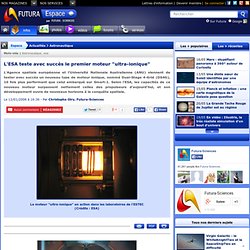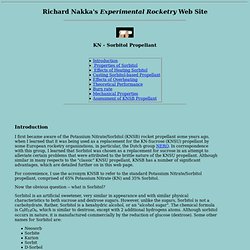

Electricity Generating Kite! Our search for a key to future energy development can be found in wind energy. As the sun warms the earth’s surface, the atmosphere is warmed also. Warm air weighs less than cold air, which make it rise. The cool air then moves in to replace the warm air. This movement of air is what causes wind. In the 1st century, a Greek man named Heron of Alexandria created the first windmill. The quest for creating a revolutionary wind generator that has the potential to compete with fossil fuels starts with the wind. A man named Miles L. A kites’ surface converts the motion of the wind into lift or motion of the kite. Up until now, airborne wind turbines have been stationary, only to face the wind, like the Magenn Air Rotor System featured on the right.
In this brief talk, Saul Griffith unveils the invention his new company Makani Power has been working on: giant kite turbines that create surprising amounts of clean, renewable energy. Small Wind Turbine With LED. Open Source Nanotechnology » Make Magnetite Nanocrystals. L'ESA teste avec succès le premier moteur "ultra-ionique" Le moteur "ultra-ionique" en action dans les laboratoires de l'ESTEC(Crédits : ESA) L'ESA teste avec succès le premier moteur "ultra-ionique" - 3 Photos Le moteur ionique DS4G, pendant sa campagne de test à l'ESTEC (Crédits : ESA) Les moteurs ioniques Le principe du moteur ionique repose sur l'ionisation d'un gaz à l'aide d'un courant électrique.

Les particules chargées produites par ionisation sont accélérées par un champ électrique et expulsées à très grande vitesse dans une tuyère. Comparé à la propulsion chimique, le moteur ionique est très économique : à puissance égale, un moteur ionique consomme dix fois moins de combustible qu'un moteur-fusée classique à base d'ergols. Ce type de moteur a été expérimenté pour la première fois sur Deep Space 1, en 1998, puis sur Smart-1 en 2003. Vue d'artiste du moteur ionique de Smart-1 (Crédits : ESA) DS4G, la Rolls des moteurs ioniques Enfin, la grande différence de tension entre les deux paires de grille permet d'accélérer fortement les ions. Thermoélectrique Fan Propulsé par une bougie.
A Thermoelectric generator powered by a tealight.

It started as an experiment of how much power I could get from one candle. But I liked the idea and it worked really well so I built this electric-mechanical ornament. I did not use a high temperature TEG-module, but instead a cheap TEC-module. That can still handle 200 degrees Celsius which is good enough. Please see my other project with a more powerful TEG: Or how to create a self regulated thermoelectric CPU-cooler: Refroidi par eau chinois LTD Stirling Engine. ============================== UPDATE ============================== This high speed run combined with a 13 hour endurance run at approx 250rpm has caused the plating to wear off the displacer rod and now the engine barely run at all even on the hot plate, the displacer tube is cracked and when I removed it to inspect it i found it was so badly warped that I think it is no longer air tight.

These engines where never designed to run this fast and at the temperatures that I have used here, I am surprised it actually lasted as long as it did. Yes, I have indeed water cooled a Chinese made LTD Stirling engine. Why?.... Curiosity mainly, and simply because It was not all that difficult to do. I was counting the clicks of the piston between each tick of my overly loud clock to give me approximate rpm speeds, it now goes to fast for me to count, I will do a video giving the real numbers once I replace the acrylic displacer tube with glass. Thanks for looking. Richard Nakka's Experimental Rocketry Web Site. Introduction I first became aware of the Potassium Nitrate/Sorbitol (KNSB) rocket propellant some years ago, when I learned that it was being used as a replacement for the KN-Sucrose (KNSU) propellant by some European rocketry organizations, in particular, the Dutch group NERO.

In correspondence with this group, I learned that Sorbitol was chosen as a replacement for sucrose in an attempt to alleviate certain problems that were attributed to the brittle nature of the KNSU propellant. Although similar in many respects to the "classic" KNSU propellant, KNSB has a number of significant advantages, which are detailed further on in this web page. For convenience, I use the acronym KNSB to refer to the standard Potassium Nitrate/Sorbitol propellant, comprised of 65% Potassium Nitrate (KN) and 35% Sorbitol. Now the obvious question -- what is Sorbitol? Sorbitol is an artificial sweetener, very similar in appearance and with similar physical characteristics to both sucrose and dextrose sugars.